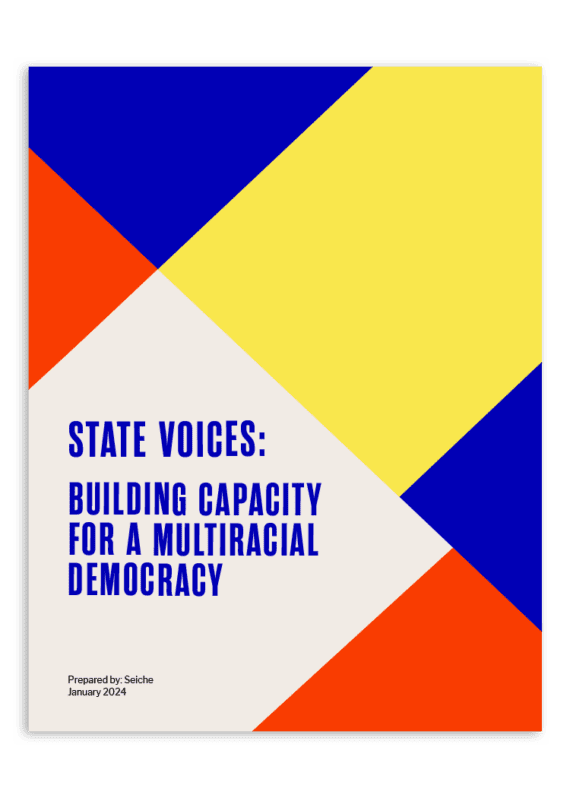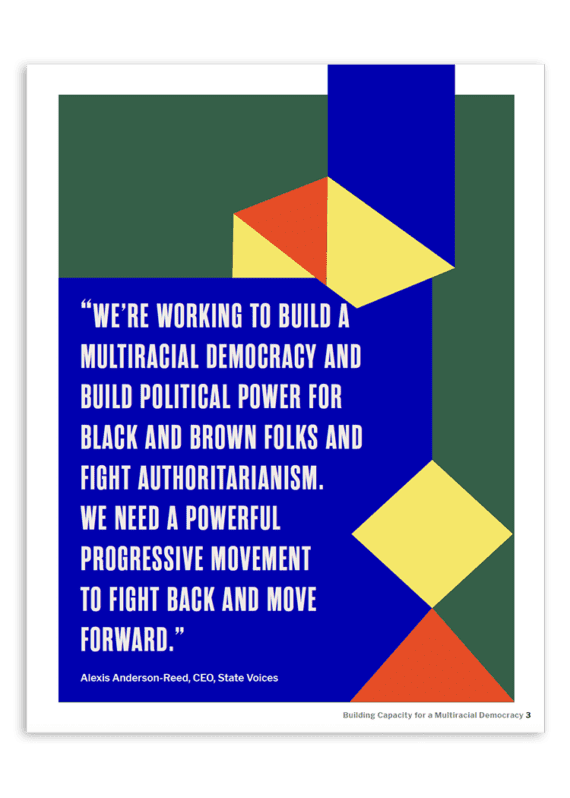The State Voices Affiliated Network is a nonpartisan infrastructure of permanent state-based affiliates called “State Tables,” advocates, and organizers across the country. They work together to fight for a healthy democracy and political power with Black, Indigenous, Latinx, Asian American and Pacific Islander (AAPI), and all people of color (BIPOC), aiming to create a world where every vote counts, every vote is heard, and every need is met.
State Voices partnered with Seiche to define and identify capacity-building offerings throughout the organization and to design a strategic, culturally relevant report that captured how State Voices provides support and helps build capacity across its affiliated network.


— Executive Director, State Voices
BillWhat We Did
Thoughtful Interviews: Assessing the “What” and the “How”
Seiche conducted more than 30 interviews and small group conversations with staff, state table partners, and affiliated organizations to understand how State Voices defines and practices capacity building, recognizing that the “how” of its approach is equally, if not more important, than “what” it does to build capacity within states.
We surfaced that State Voices approaches capacity building as organizers, from the ground up and with deep commitments to building power and cultures of liberation. Their team members are organizers, with many having previously worked at State Tables or other organizations advancing equity and justice, which makes them trusted partners because they’ve been in the work, alongside communities, from the beginning.
Culturally Relevant, Creative Report
We developed a creative report, outlining State Voices’ five-step approach to capacity building, promoting a positive culture, and leaning into innovation. We worked closely with State Voices to ensure the report highlighted the people and places of its work, and our content specialist, Ebony Welch, brought design inspiration drawing on quilting traditions in Black communities.
We also developed recommendations for sharing the report with key stakeholders and highlighted opportunities to continue deepening the organization’s capacity-building practices.


